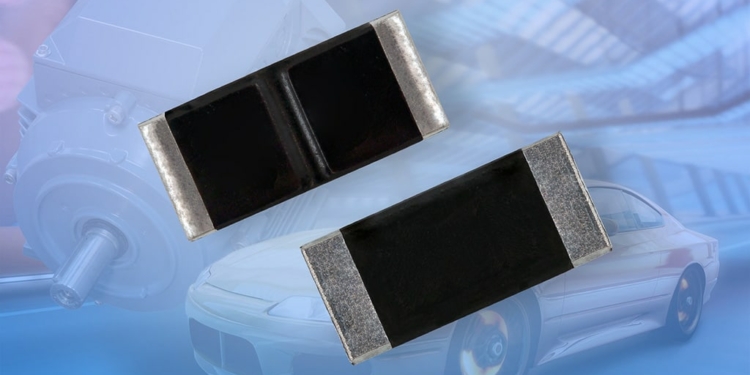Source: Vishay news
MALVERN, Pa. — May 30, 2019 — Vishay Intertechnology, Inc. (NYSE: VSH) today introduced new Automotive Grade power metal plate current sense resistors featuring 2 W and 3 W power ratings in 2010- and 2512-sized packages.
Aimed at current sensing and pulse applications in power supplies, instruments, power amplifiers, shunts, power inverters, and battery management circuitry, the new WFM resistors allow designers to use a single high power resistor instead of running multiple resistors in parallel, which can cause current measurement errors. By thus improving power density, the WFM additionally promotes space savings on the circuit board that will in turn enable smaller and lighter products for the end consumer.
The WFM devices feature a construction that incorporates an improved thermal management design utilizing a copper heat spreader, resulting in 2 W and 3 W resistors in the 2010 and 2512 package sizes that maintain the superior electrical characteristics of the power metal plate construction. A proprietary processing technique enables a wide range of low resistance values from 5 mΩ to 500 mΩ, with tolerances down to ± 1.0 %.
The devices are ideal for all types of current sensing and pulse applications in automotive electronic controls, brushless DC motor controls, battery management for electric and hybrid vehicles; high power inverter / converter controls and large motor drives for industrial applications; power supplies for downhole instrumentation; inverter control for consumer appliances and HVAC systems; and power management, conversion, and safety in servers and other computing applications.
The resistors feature a solid metal manganese-copper or nickel-chromium alloy resistive element with low TCR (< 20 ppm/°C), low inductance values of 0.5 nH to 5 nH, low thermal EMF to < 3 µV/°C, and an operating temperature range of -65 °C to +170 °C. The devices are RoHS-compliant, halogen-free, and Vishay Green.
Samples and production quantities of the WFM resistors are available now, with lead times of six to eight weeks for larger orders.































